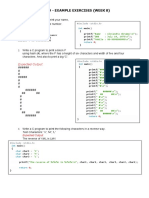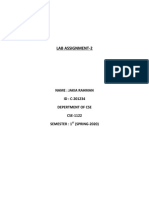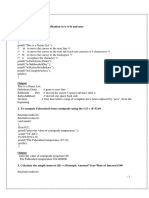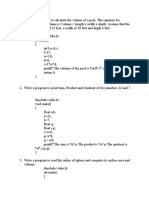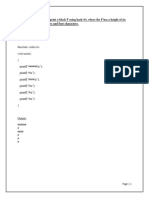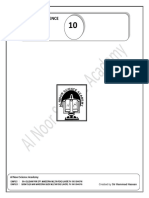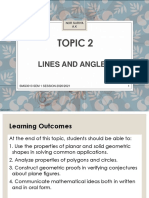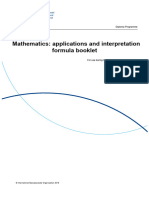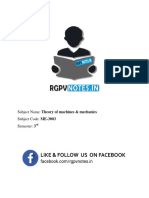0% found this document useful (0 votes)
25 views8 pagesCse115 Lab Manual 3 Operators Part2
The document contains a lab manual for CSE 115, featuring practice problems and exercises focused on C programming, particularly using bitwise operators, arithmetic operations, and geometric calculations. It includes example C programs demonstrating various concepts such as bitwise operations, surface area calculations, and user input handling. Additionally, it provides exercise and homework questions for students to reinforce their understanding of the material.
Uploaded by
safiulbasar51Copyright
© © All Rights Reserved
We take content rights seriously. If you suspect this is your content, claim it here.
Available Formats
Download as DOCX, PDF, TXT or read online on Scribd
0% found this document useful (0 votes)
25 views8 pagesCse115 Lab Manual 3 Operators Part2
The document contains a lab manual for CSE 115, featuring practice problems and exercises focused on C programming, particularly using bitwise operators, arithmetic operations, and geometric calculations. It includes example C programs demonstrating various concepts such as bitwise operations, surface area calculations, and user input handling. Additionally, it provides exercise and homework questions for students to reinforce their understanding of the material.
Uploaded by
safiulbasar51Copyright
© © All Rights Reserved
We take content rights seriously. If you suspect this is your content, claim it here.
Available Formats
Download as DOCX, PDF, TXT or read online on Scribd
/ 8



















